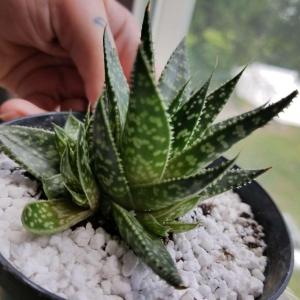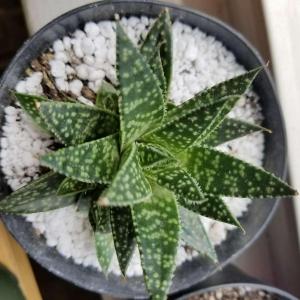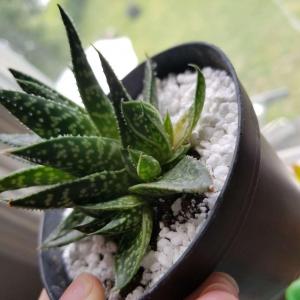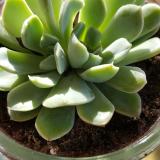文章
Abigal
2017年05月22日

Add a vertical touch in your container garden by growing climbing plants for containers. Must see these 24 best vines for pots.
The climbing plants in pots can bring a real touch of nature to any place, and they are a good way to add some privacy, too. These plants will create a nest of greenery where you can relax and rejuvenate and harbor in the mild soothing fragrance and lively colors.
1. Ivy

Ivy is one of the best climbers for containers. Its ability to adapt to all types of position makes it an excellent choice for beginners. It can grow up to 80 feet high, and its evergreen foliage remains green even in winters. Plant it in a container that is wide and shallow rather than narrow and deep.
2. Morning Glory

Morning glories are a good option and one of the best creepers or vines for containers. This old-fashioned plant is easy to grow.
3. Clematis

Clematis is the perfect plant to add vertical height and interest to any container garden. Plant clematis in a large container. Fertilize this plant regularly and make sure to always water it thoroughly and deeply.
4. Virginia Creeper

Virginia Creeper’s foliage turn into a beautiful red in the autumn. You can also grow it in a pot, even on a balcony. It improves privacy! To grow this, find a really big container and provide sturdy support of a trellis.
5. Climbing Hydrangea
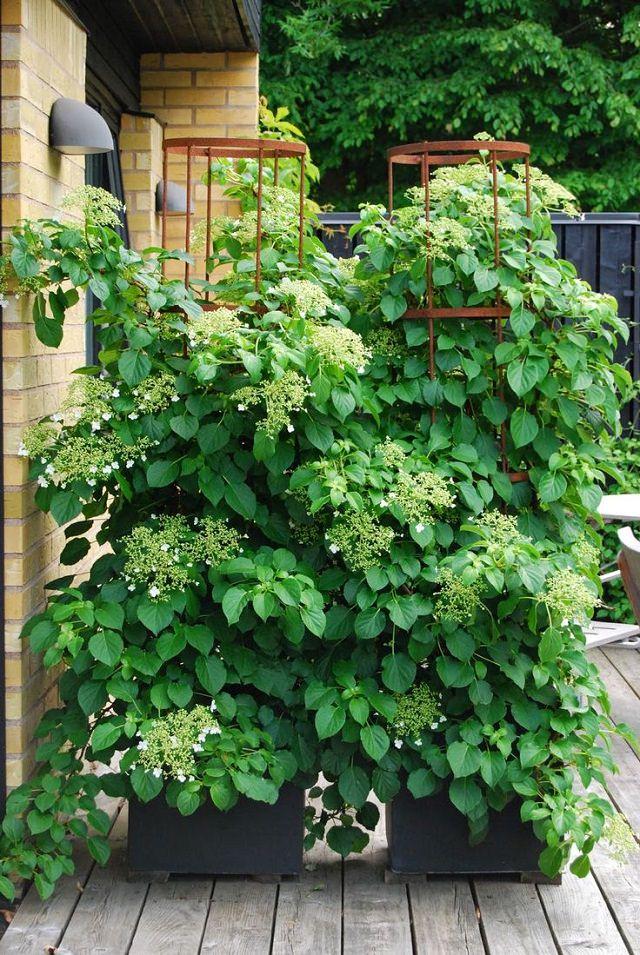
Climbing hydrangea is a great option, if you live under the USDA Zones 5-8 and have a lot of room as this vine can grow up to 70 feet long. It is shade tolerant and thrives best in semi-shaded positions. This plant needs a large pot of about of the size of the half of a whiskey barrel.
6. Trumpet vine

This big (up to 40 ft.) and a fast growing vine is considered as a weed in some parts due to its invasiveness. Despite the fact, this plant is famous for its trumpet-shaped flowers that come in shades of yellow to red and attract hummingbirds. Trumpet vine is more suitable for warm temperates, still it can acclimatize and grow in cooler regions if the protection from cold is provided in winter.
7. Bougainvillea

The bougainvillea is not a vine but a climbing shrub, it is easy to grow, colorful and controllable. You can grow it to give a tropical touch to your container garden. As bougainvillea is a tropical plant, the protection in winter is required in temperate zones.
8. Honeysuckle

There are about 180 different varieties of honeysuckle available as vines and creepers and can be grown diversely in a variety of climates (USDA Zones 3-11). Most of the honeysuckle varieties are evergreen in warmer climates. When growing honeysuckle, place the plant in full sun and do a regular watering. Occasional feeding with balanced fertilizer is enough.
9. Wisteria

Wisteria is one the most popular vines and it grows best in moderately cool climate. It can become huge, however, by providing solid support to the wisteria vine and some space you can grow it in a container, too. Also, it is required that you transplant this plant time to time into one size bigger pot. You can learn how to grow wisteria in a pot here.
10. Common Jasmine
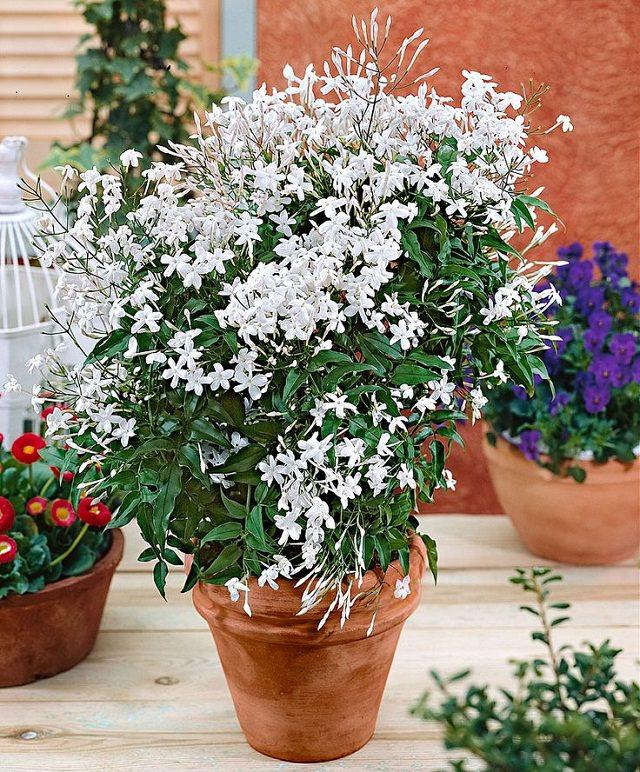
Truly the most fragrant flower. Even its heady fragrance is sometimes too much for some people. The Jasminum Officinalis is easy to grow in containers and requires well-draining soil and warmth (hardy in USDA Zones 8-11) to thrive. The plant usually blooms in summer but in tropics, jasmines are evergreen and in flower most of the year.
11. Confederate Jasmine

Confederate jasmine is a robust plant. It has moderate watering needs and doesn’t mind the hot and humid weather. Similar to other jasmines, it also likes warm climate and exposure to the sun. The beautiful star-shaped flowers appear in clusters. This vine is suitable for containers as it only grows up to 20 ft. long.
12. Climbing Rose
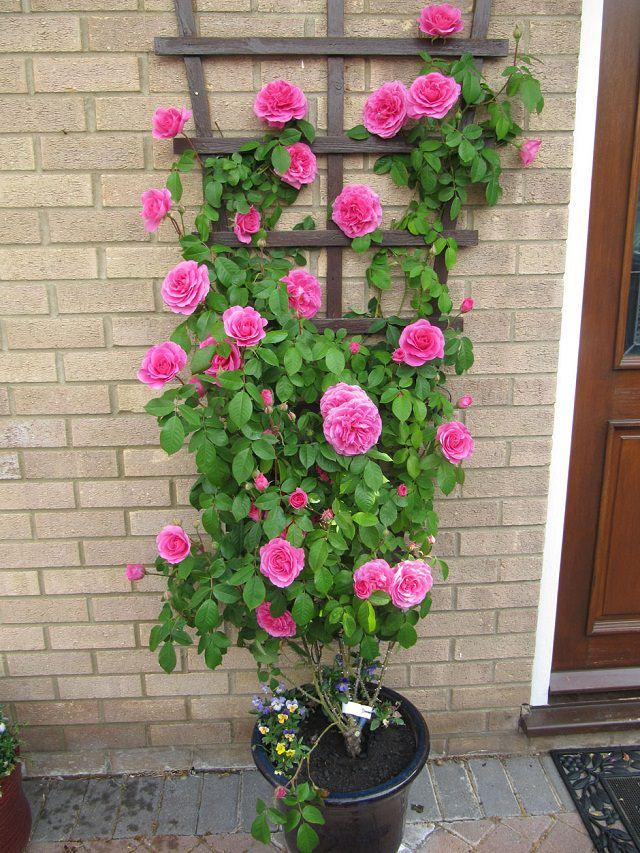
Climbing roses bloom prolifically, many varieties have a pleasant rosy scent. Consider the overall mature size of the variety that you are going to grow and the time you can devote to it, as roses require care and maintenance. Prune the plant on time and regularly remove the faded flowers to keep it in an attractive appearance.
Also Read: How to Make a Container Rose Garden
13. Mandevilla

Mandevilla is an eye catcher. With proper care and an optimal location to enjoy the graceful, funnel-shaped flowers of this plant appear all summer. However, Mandevilla requires warm climate to thrive but you can still grow it as an annual in cooler zones.
14. Cup and Saucer Vine

Cup and saucer vine is a fast growing abundant flowering plant that is native to Mexico. It blooms prolifically but to do this the plant needs an optimal bright location. In temperates, you can grow it either as an annual or protect the plant from winter by keeping it indoors.
15. Passion Flower

One of the most beautiful privacy protection plant for a container garden. If you prefer an exotic flair and extraordinary flowers, the passion flower is a right choice for you. It is important that you provide it sufficient sun. The passion flower is slightly frost resistant, but it should spend its time in a favorable spot in the winters.
16. Black-eyed Susan

Black-eyed Susan is a perennial vine that requires a sunny place and a trellis to climb on. This period flowering climbing plant can reach a height of over two meters with good care! Thus, the Black-eyed Susan is ideal if you want color and privacy in your container garden.
17. Dutchman’s Pipe
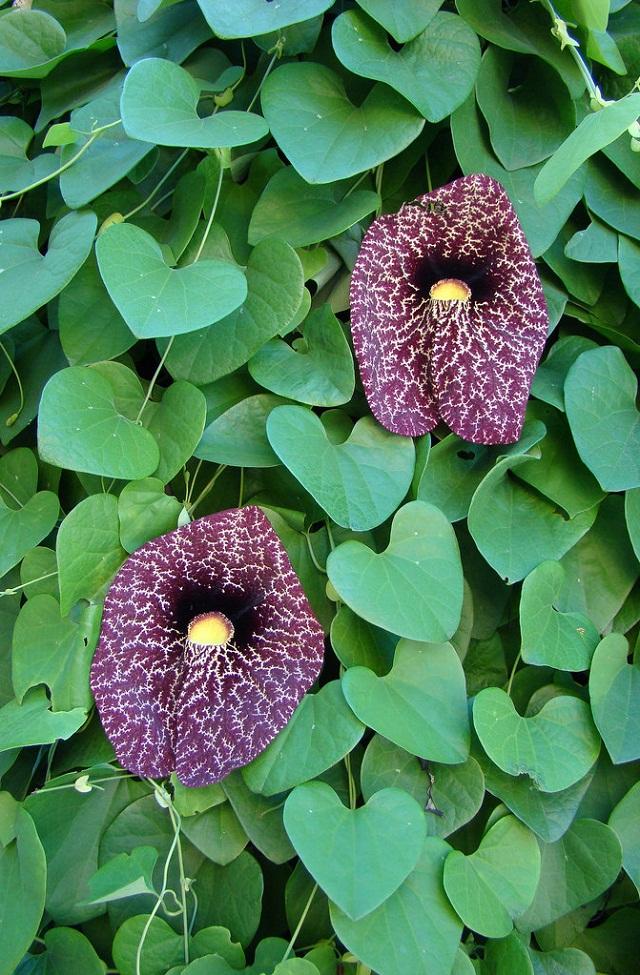
If you are looking for an unusual plant for your container garden, plant the dutchman’s pipe. The lush, large and heart-shaped foliage also provide interest apart from flowers that have a mildly unpleasant odor. Growing this unique plant as a perennial is only possible in warm subtropical or tropical climates. Everywhere else (as the plant is not frost tolerant) it must be grown in a greenhouse or indoors.
18. Butterfly Pea

Butterfly pea is a tropical vine and grows best in USDA Zones 10 and 11. In a cold temperate zone, grow this perennial as an annual. Plant it in a medium to a large sized container with a trellis to climb on from the initial stage.
19. Moonflower

Moonflower is a fantastic night blooming plant with large trumpet-shaped fragrant flowers. Place the pot near your patio or bedroom window to enjoy its fragrance in the night but make sure the place receives morning sun and light afternoon shade. Deadhead or remove the spent blooms to encourage more flowers.
20. Asarina Scandens

Asarina, which is also known as climbing snapdragon is perfect for growing in containers as it seldom exceeds the height of 8-10 feet. Many hybrid cultivars are available in the shade of different colors. You can also use this vine in hanging baskets or as a groundcover. Asarina is more a warm climate plant and often grown as an annual in temperates.
21. Canary Creeper
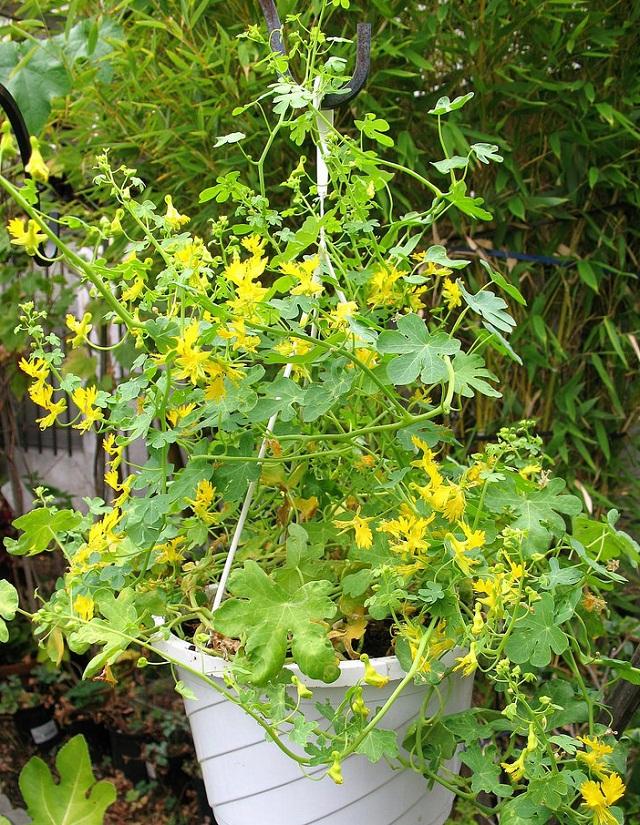
Let this annual vine ramble up on a trellis, and it will award you with its showy yellow flowers that look unmatchable. The canary creeper has long blooming period from summer to fall and even more in warm subtropical regions where it is perennial (USDA Zone 9 and higher).
22. Sweet Pea

Grow sweet peas in warm zones in fall and winter. In temperates, plant this fragrant vine in spring or summer. When growing in containers choose bush type varieties.
23. Sweet Autumn Clematis
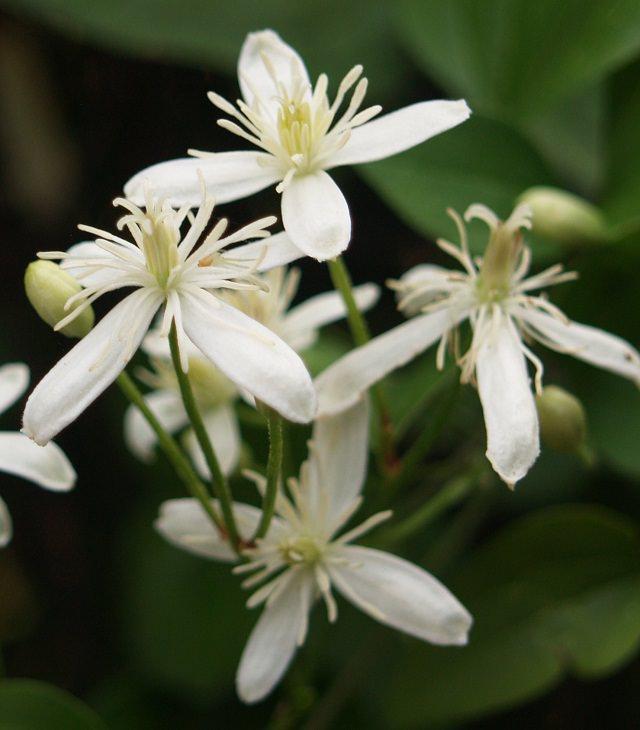
Sweet autumn clematis vine forms masses of amazingly fragrant flowers from late summer to fall (autumn). You can grow this vine diversely in both the cold and warm climates (USDA Zones 4-9). Also, in subtropical and tropical climates if shade from afternoon sun is provided.
24. Snail Vine

This beautiful tropical vine has rare snail-like fragrant flowers that are white in the beginning and later unfurl to lavender pink. However, it’s easy to grow snail vine in non-tropical zones, but the plant dies in winter and returns again in the spring.
The climbing plants in pots can bring a real touch of nature to any place, and they are a good way to add some privacy, too. These plants will create a nest of greenery where you can relax and rejuvenate and harbor in the mild soothing fragrance and lively colors.
1. Ivy

Ivy is one of the best climbers for containers. Its ability to adapt to all types of position makes it an excellent choice for beginners. It can grow up to 80 feet high, and its evergreen foliage remains green even in winters. Plant it in a container that is wide and shallow rather than narrow and deep.
2. Morning Glory

Morning glories are a good option and one of the best creepers or vines for containers. This old-fashioned plant is easy to grow.
3. Clematis

Clematis is the perfect plant to add vertical height and interest to any container garden. Plant clematis in a large container. Fertilize this plant regularly and make sure to always water it thoroughly and deeply.
4. Virginia Creeper

Virginia Creeper’s foliage turn into a beautiful red in the autumn. You can also grow it in a pot, even on a balcony. It improves privacy! To grow this, find a really big container and provide sturdy support of a trellis.
5. Climbing Hydrangea

Climbing hydrangea is a great option, if you live under the USDA Zones 5-8 and have a lot of room as this vine can grow up to 70 feet long. It is shade tolerant and thrives best in semi-shaded positions. This plant needs a large pot of about of the size of the half of a whiskey barrel.
6. Trumpet vine

This big (up to 40 ft.) and a fast growing vine is considered as a weed in some parts due to its invasiveness. Despite the fact, this plant is famous for its trumpet-shaped flowers that come in shades of yellow to red and attract hummingbirds. Trumpet vine is more suitable for warm temperates, still it can acclimatize and grow in cooler regions if the protection from cold is provided in winter.
7. Bougainvillea

The bougainvillea is not a vine but a climbing shrub, it is easy to grow, colorful and controllable. You can grow it to give a tropical touch to your container garden. As bougainvillea is a tropical plant, the protection in winter is required in temperate zones.
8. Honeysuckle

There are about 180 different varieties of honeysuckle available as vines and creepers and can be grown diversely in a variety of climates (USDA Zones 3-11). Most of the honeysuckle varieties are evergreen in warmer climates. When growing honeysuckle, place the plant in full sun and do a regular watering. Occasional feeding with balanced fertilizer is enough.
9. Wisteria

Wisteria is one the most popular vines and it grows best in moderately cool climate. It can become huge, however, by providing solid support to the wisteria vine and some space you can grow it in a container, too. Also, it is required that you transplant this plant time to time into one size bigger pot. You can learn how to grow wisteria in a pot here.
10. Common Jasmine

Truly the most fragrant flower. Even its heady fragrance is sometimes too much for some people. The Jasminum Officinalis is easy to grow in containers and requires well-draining soil and warmth (hardy in USDA Zones 8-11) to thrive. The plant usually blooms in summer but in tropics, jasmines are evergreen and in flower most of the year.
11. Confederate Jasmine

Confederate jasmine is a robust plant. It has moderate watering needs and doesn’t mind the hot and humid weather. Similar to other jasmines, it also likes warm climate and exposure to the sun. The beautiful star-shaped flowers appear in clusters. This vine is suitable for containers as it only grows up to 20 ft. long.
12. Climbing Rose

Climbing roses bloom prolifically, many varieties have a pleasant rosy scent. Consider the overall mature size of the variety that you are going to grow and the time you can devote to it, as roses require care and maintenance. Prune the plant on time and regularly remove the faded flowers to keep it in an attractive appearance.
Also Read: How to Make a Container Rose Garden
13. Mandevilla

Mandevilla is an eye catcher. With proper care and an optimal location to enjoy the graceful, funnel-shaped flowers of this plant appear all summer. However, Mandevilla requires warm climate to thrive but you can still grow it as an annual in cooler zones.
14. Cup and Saucer Vine

Cup and saucer vine is a fast growing abundant flowering plant that is native to Mexico. It blooms prolifically but to do this the plant needs an optimal bright location. In temperates, you can grow it either as an annual or protect the plant from winter by keeping it indoors.
15. Passion Flower

One of the most beautiful privacy protection plant for a container garden. If you prefer an exotic flair and extraordinary flowers, the passion flower is a right choice for you. It is important that you provide it sufficient sun. The passion flower is slightly frost resistant, but it should spend its time in a favorable spot in the winters.
16. Black-eyed Susan

Black-eyed Susan is a perennial vine that requires a sunny place and a trellis to climb on. This period flowering climbing plant can reach a height of over two meters with good care! Thus, the Black-eyed Susan is ideal if you want color and privacy in your container garden.
17. Dutchman’s Pipe

If you are looking for an unusual plant for your container garden, plant the dutchman’s pipe. The lush, large and heart-shaped foliage also provide interest apart from flowers that have a mildly unpleasant odor. Growing this unique plant as a perennial is only possible in warm subtropical or tropical climates. Everywhere else (as the plant is not frost tolerant) it must be grown in a greenhouse or indoors.
18. Butterfly Pea

Butterfly pea is a tropical vine and grows best in USDA Zones 10 and 11. In a cold temperate zone, grow this perennial as an annual. Plant it in a medium to a large sized container with a trellis to climb on from the initial stage.
19. Moonflower

Moonflower is a fantastic night blooming plant with large trumpet-shaped fragrant flowers. Place the pot near your patio or bedroom window to enjoy its fragrance in the night but make sure the place receives morning sun and light afternoon shade. Deadhead or remove the spent blooms to encourage more flowers.
20. Asarina Scandens

Asarina, which is also known as climbing snapdragon is perfect for growing in containers as it seldom exceeds the height of 8-10 feet. Many hybrid cultivars are available in the shade of different colors. You can also use this vine in hanging baskets or as a groundcover. Asarina is more a warm climate plant and often grown as an annual in temperates.
21. Canary Creeper

Let this annual vine ramble up on a trellis, and it will award you with its showy yellow flowers that look unmatchable. The canary creeper has long blooming period from summer to fall and even more in warm subtropical regions where it is perennial (USDA Zone 9 and higher).
22. Sweet Pea

Grow sweet peas in warm zones in fall and winter. In temperates, plant this fragrant vine in spring or summer. When growing in containers choose bush type varieties.
23. Sweet Autumn Clematis

Sweet autumn clematis vine forms masses of amazingly fragrant flowers from late summer to fall (autumn). You can grow this vine diversely in both the cold and warm climates (USDA Zones 4-9). Also, in subtropical and tropical climates if shade from afternoon sun is provided.
24. Snail Vine

This beautiful tropical vine has rare snail-like fragrant flowers that are white in the beginning and later unfurl to lavender pink. However, it’s easy to grow snail vine in non-tropical zones, but the plant dies in winter and returns again in the spring.
1
0
文章
Abigal
2017年05月22日

Learn how to grow gaura in your garden. Gaura plant care and growing is easy. This drought tolerant shrub thrives in well-drained soil and loves to bath in the day long sun.
The gaura is a beautiful perennial plant that is easy to grow and with minimal care, it offers a long blooming period and colorful flowers that attract butterflies.
Gaura Plant Care

USDA Zones— 5 – 10
Difficulty— Easy
Other Names— Wandflower, Butterfly gaura, Whirling butterfly, Siskiyou pink
The genus “Gaura” consists of about 20 species of plants. It is native to North America. Its fine erected foliage and irregularly shaped flowers make it attractive. You can vary the uses according to the species, low growing varieties (not more than 24 inches) are placed in borders or in rock gardens while the large shrub-like varieties are perfect for growing in the cluster behind low growing plants in flower beds.
Two Popular VarietiesGaura Biennis (Biennial Gaura): A tall variety that can grow 3-6 feet high. The foliage is red when matured, it has hairy flowering stems and light pink or white colored flowers that turn into coral red in late summer and fall.Gaura Lindheimeri (White Gaura): A Texas native, tolerant to drought. It grows up to 5 feet tall, flowers appears from summer to fall.How to Grow GauraPropagation
Gaura can be propagated from seeds.The seeds are available in local garden shops or can be bought online. Propagation by cuttings should be done in spring and late summer or by division in the fall.
Planting Gaura
Prepare the planting site by performing a deep plowing. Remove stones, debris, and weeds. This plant doesn’t transplant well, that’s why it is better to sow the seeds directly at the planting site, once all the dangers of frost are eliminated and the weather warms up.
If you are planting a potted gaura plant, make sure to make a planting hole in soil– twice wide and of the same depth as it was planted in the previous pot. Place the plant in the hole and fill that with well-drained soil. If the soil is very heavy or poor prepare it by adding compost or well-rotted manure and coarse sand in smaller proportion.
How to Grow Gaura in Pots
Growing gaura in pots is possible. Choose the pot that is 12 inches deep and 10 inches wide to provide a sufficient space to the plant. Keep the pot in sunny spot and water it only when the top surface of soil dries out.
Requirements for Growing Gaura

Position
Planting position must be sunny, for prolific blooms exposure to at least 6 hours of sunlight is ideal. If the location is windy provide support to plants.
Soil
Gaura grows well in light and sandy soil. Due to its taproot, the soil must be deep and also little fertile. Water logging soil that is clay rich and cloaks the drainage hinders the development and must be avoided.
Watering
Growing gaura is easy. As it adapts well to the drought-like conditions due to the long taproot it has, infrequent and economical watering is recommended. Water it deeply but only when the top two inch of soil seems dry.
Spacing
The planting distance for low growing varieties is around 12 inches. For more shrub like large varieties, space the plants 15 inches apart from each other.
Gaura Plant CareFertilizer
Gaura doesn’t require additional fertilizer to bloom. It thrives in poor soil. Application of manure or compost during planting is sufficient. Even adding too much natural fertilizer can cause the plant to grow limply.
Deadheading and Pruning
Remove spent flower spikes as soon as they fade, cut the entire stalk to promote more blooms. Once the blooming period ends in late summer, trim the shrub slightly (3″) to refresh it. The plant will start to flower again in fall with more vigor.
Overwintering
Gaura plant care is if you live in the warmer region. During the winter, let the faded stems on site, they provide protection against the cold. It is also recommended to mulch around the roots to insulate them, especially if you live below USDA Zone 8.
Diseases and Pests
The gaura is a beautiful perennial plant that is easy to grow and with minimal care, it offers a long blooming period and colorful flowers that attract butterflies.
Gaura Plant Care

USDA Zones— 5 – 10
Difficulty— Easy
Other Names— Wandflower, Butterfly gaura, Whirling butterfly, Siskiyou pink
The genus “Gaura” consists of about 20 species of plants. It is native to North America. Its fine erected foliage and irregularly shaped flowers make it attractive. You can vary the uses according to the species, low growing varieties (not more than 24 inches) are placed in borders or in rock gardens while the large shrub-like varieties are perfect for growing in the cluster behind low growing plants in flower beds.
Two Popular VarietiesGaura Biennis (Biennial Gaura): A tall variety that can grow 3-6 feet high. The foliage is red when matured, it has hairy flowering stems and light pink or white colored flowers that turn into coral red in late summer and fall.Gaura Lindheimeri (White Gaura): A Texas native, tolerant to drought. It grows up to 5 feet tall, flowers appears from summer to fall.How to Grow GauraPropagation
Gaura can be propagated from seeds.The seeds are available in local garden shops or can be bought online. Propagation by cuttings should be done in spring and late summer or by division in the fall.
Planting Gaura
Prepare the planting site by performing a deep plowing. Remove stones, debris, and weeds. This plant doesn’t transplant well, that’s why it is better to sow the seeds directly at the planting site, once all the dangers of frost are eliminated and the weather warms up.
If you are planting a potted gaura plant, make sure to make a planting hole in soil– twice wide and of the same depth as it was planted in the previous pot. Place the plant in the hole and fill that with well-drained soil. If the soil is very heavy or poor prepare it by adding compost or well-rotted manure and coarse sand in smaller proportion.
How to Grow Gaura in Pots
Growing gaura in pots is possible. Choose the pot that is 12 inches deep and 10 inches wide to provide a sufficient space to the plant. Keep the pot in sunny spot and water it only when the top surface of soil dries out.
Requirements for Growing Gaura

Position
Planting position must be sunny, for prolific blooms exposure to at least 6 hours of sunlight is ideal. If the location is windy provide support to plants.
Soil
Gaura grows well in light and sandy soil. Due to its taproot, the soil must be deep and also little fertile. Water logging soil that is clay rich and cloaks the drainage hinders the development and must be avoided.
Watering
Growing gaura is easy. As it adapts well to the drought-like conditions due to the long taproot it has, infrequent and economical watering is recommended. Water it deeply but only when the top two inch of soil seems dry.
Spacing
The planting distance for low growing varieties is around 12 inches. For more shrub like large varieties, space the plants 15 inches apart from each other.
Gaura Plant CareFertilizer
Gaura doesn’t require additional fertilizer to bloom. It thrives in poor soil. Application of manure or compost during planting is sufficient. Even adding too much natural fertilizer can cause the plant to grow limply.
Deadheading and Pruning
Remove spent flower spikes as soon as they fade, cut the entire stalk to promote more blooms. Once the blooming period ends in late summer, trim the shrub slightly (3″) to refresh it. The plant will start to flower again in fall with more vigor.
Overwintering
Gaura plant care is if you live in the warmer region. During the winter, let the faded stems on site, they provide protection against the cold. It is also recommended to mulch around the roots to insulate them, especially if you live below USDA Zone 8.
Diseases and Pests
1
0
文章
Micky
2017年05月22日

Learn how to grow datura. Growing datura is easy and this medicinal herb doesn’t require any special care or attention.
Flowering: Summer to late fall
Flower color: White, pink, yellow, purple
Exposure: Full Sun
Soil pH: Neutral
Height: 30 cm to 1.5 m
Plant type: Flower, Medicinal Herb
Type of foliage: deciduous
USDA Hardiness Zones: 9 – 11
Propagation Method: Seed sowing, cuttings
Toxicity: All parts of the plant are toxic, its ingestion leads to a delirium or hallucinatory feeling for several hours
Species and Varieties: The genus includes about twenty species. Datura stramonium, the Jimsonweed is often considered a weed and is one of the most poisonous plants in Solanaceae family.
Other Names— Jimson weed, Devil’s snare, thornapple, moon flower, hell’s bells, devil’s trumpet, devil’s weed, tolguacha, Jamestown weed, stinkweed, locoweed, pricklyburr, and devil’s cucumber
The plant is recognizable by its large leaves of 20 cm, dark green with jagged edges. It has a bushier growth and the plant usually grow 60 cm high but it can grow up to nearly 1.5 m. The flowers are bright colored and appear in late summer. Followed by fruits that come in the size of a small apricot, covered with long needle like thorns.
Growing Datura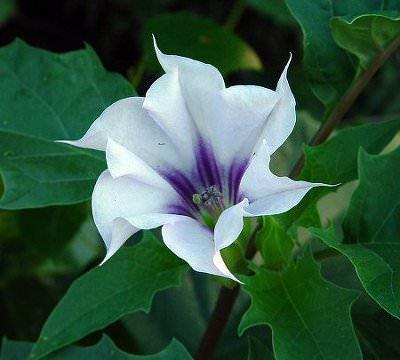
Growing datura is extremely easy. Just plant it in full sun in well-drained soil.
Soil
Humus-rich, well drained and calcareous soil is required for growing datura. However, it tolerates a variety of soil types.
Watering
Water your datura up regularly when it is establishing. Once matured, it doesn’t require watering as it seeks water deeply into the soil with the help of its long taproot.
Invasiveness
This plant is considered a weed. It can easily become invasive if grown in favorable conditions.
Pests and Diseases
The plant doesn’t bother by pests and diseases much. Still, spider mites, whiteflies, and mealybugs may attack it.
Uses and Effects
Datura stramonium contains powerful alkaloids. The plant if ingested can cause hallucinations, tachycardia, muscle weakness, and amnesia.

Flowering: Summer to late fall
Flower color: White, pink, yellow, purple
Exposure: Full Sun
Soil pH: Neutral
Height: 30 cm to 1.5 m
Plant type: Flower, Medicinal Herb
Type of foliage: deciduous
USDA Hardiness Zones: 9 – 11
Propagation Method: Seed sowing, cuttings
Toxicity: All parts of the plant are toxic, its ingestion leads to a delirium or hallucinatory feeling for several hours
Species and Varieties: The genus includes about twenty species. Datura stramonium, the Jimsonweed is often considered a weed and is one of the most poisonous plants in Solanaceae family.
Other Names— Jimson weed, Devil’s snare, thornapple, moon flower, hell’s bells, devil’s trumpet, devil’s weed, tolguacha, Jamestown weed, stinkweed, locoweed, pricklyburr, and devil’s cucumber
The plant is recognizable by its large leaves of 20 cm, dark green with jagged edges. It has a bushier growth and the plant usually grow 60 cm high but it can grow up to nearly 1.5 m. The flowers are bright colored and appear in late summer. Followed by fruits that come in the size of a small apricot, covered with long needle like thorns.
Growing Datura

Growing datura is extremely easy. Just plant it in full sun in well-drained soil.
Soil
Humus-rich, well drained and calcareous soil is required for growing datura. However, it tolerates a variety of soil types.
Watering
Water your datura up regularly when it is establishing. Once matured, it doesn’t require watering as it seeks water deeply into the soil with the help of its long taproot.
Invasiveness
This plant is considered a weed. It can easily become invasive if grown in favorable conditions.
Pests and Diseases
The plant doesn’t bother by pests and diseases much. Still, spider mites, whiteflies, and mealybugs may attack it.
Uses and Effects
Datura stramonium contains powerful alkaloids. The plant if ingested can cause hallucinations, tachycardia, muscle weakness, and amnesia.
1
1
文章
Micky
2017年05月22日

Learn how to grow timothy hay, growing timothy hay is easy but requires a few basic conditions which you can read below.
USDA Zones — 3-9
Difficulty — Easy
Other names — Herd grass, Herd’s grass, Meadow cat’s-tail, Phleum pratense, Timothy, Timothy grass, Meadow cat’s-tail and common cat’s tail.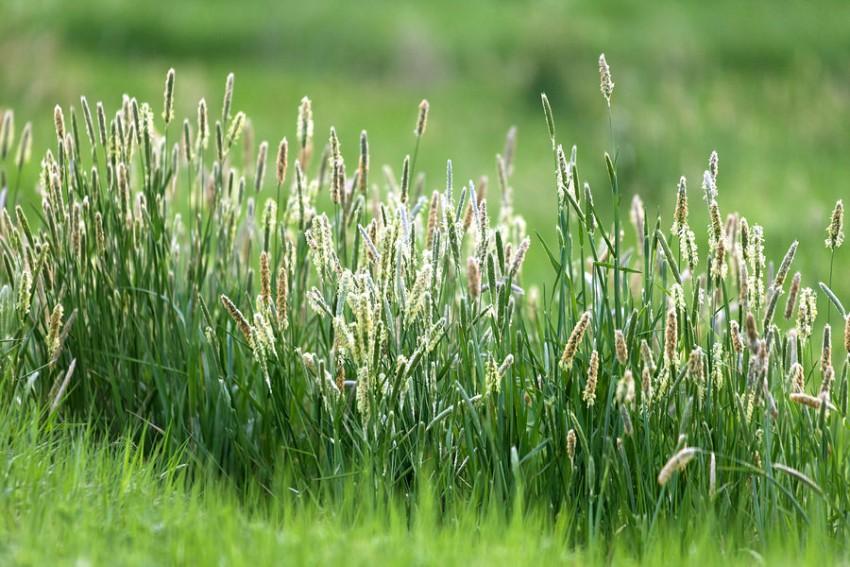
Timothy (Phleum pratense) is a perennial grass that grows of itself in some places, especially in the north, in the east and on the mountains. The leaves of timothy grass are quite pale green. Young leaves are rolled into the sleeve and then they grow in spirals. The base of the plant is often bulged and bulbous.
Timothy grass is generally used as hay to feed horses and that’s why is it also called Timothy hay. Apart from being used as hay it also produces a durable and attractive lawn. Growing timothy hay is relatively an easier task.
How to Grow Timothy HayPropagation and Planting Timothy GrassPrepare a place to sow seeds. Remove all weeds from the planting site with a hoe.Sprinkle the seeds on the planting site. The seeds must cover about one half of the total surface area of the soil.Rake to incorporate the planting site of the seeds in the soil. Sow the seeds no more than 1/2 inches deep.Slowly moisten the soil and keep it moist until the seeds germinate.For growing timothy hay, sow seeds in spring or late summer, you can also plant seeds in early fall.Requirements for Growing Timothy HayLocation
Timothy hay growing should be done on a flat area that receives partial shade. This cool season grass is undemanding and doesn’t require any special care.
Soil
Timothy grass grows well in both sandy or clay rich soil. It tolerates the wet conditions and thrives in slightly dry state for a short time too.
Watering
Keep the soil moist all the time. For growing timothy hay, regular watering is required as the plant has shallow roots that are not able to provide water under the surface of the soil, so even a short drought period can be detrimental for plant.
Timothy Hay Care
The timothy hay field should not be trampled on during drought periods because the grass has very shallow and fine roots that are sensitive at these times.
Fertilizer
Feed it with fertilizer rich in nitrogen in spring and again after harvesting. If you’re growing timothy hay with legumes, skip the nitrogen fertilizer. For accuracy in fertilization soil testing is recommended.
Harvesting
USDA Zones — 3-9
Difficulty — Easy
Other names — Herd grass, Herd’s grass, Meadow cat’s-tail, Phleum pratense, Timothy, Timothy grass, Meadow cat’s-tail and common cat’s tail.

Timothy (Phleum pratense) is a perennial grass that grows of itself in some places, especially in the north, in the east and on the mountains. The leaves of timothy grass are quite pale green. Young leaves are rolled into the sleeve and then they grow in spirals. The base of the plant is often bulged and bulbous.
Timothy grass is generally used as hay to feed horses and that’s why is it also called Timothy hay. Apart from being used as hay it also produces a durable and attractive lawn. Growing timothy hay is relatively an easier task.
How to Grow Timothy HayPropagation and Planting Timothy GrassPrepare a place to sow seeds. Remove all weeds from the planting site with a hoe.Sprinkle the seeds on the planting site. The seeds must cover about one half of the total surface area of the soil.Rake to incorporate the planting site of the seeds in the soil. Sow the seeds no more than 1/2 inches deep.Slowly moisten the soil and keep it moist until the seeds germinate.For growing timothy hay, sow seeds in spring or late summer, you can also plant seeds in early fall.Requirements for Growing Timothy HayLocation
Timothy hay growing should be done on a flat area that receives partial shade. This cool season grass is undemanding and doesn’t require any special care.
Soil
Timothy grass grows well in both sandy or clay rich soil. It tolerates the wet conditions and thrives in slightly dry state for a short time too.
Watering
Keep the soil moist all the time. For growing timothy hay, regular watering is required as the plant has shallow roots that are not able to provide water under the surface of the soil, so even a short drought period can be detrimental for plant.
Timothy Hay Care
The timothy hay field should not be trampled on during drought periods because the grass has very shallow and fine roots that are sensitive at these times.
Fertilizer
Feed it with fertilizer rich in nitrogen in spring and again after harvesting. If you’re growing timothy hay with legumes, skip the nitrogen fertilizer. For accuracy in fertilization soil testing is recommended.
Harvesting
0
0
文章
Micky
2017年05月22日

Learn how to plant thuja, it’s one of the fast growing privacy trees you’d like to plant in your garden.
Thuja is a small genus belonging to the group of conifers and to the family of Cupressaceae. It is native to North America and Asia. It has a columnar habit and flattened branches. Some of its varieties can reach up to 200 feet tall in favorable climate.
USDA Zones — 3 – 11
Propagation Method — Seeds, vegetative propagation
Difficulty — Easy
Soil pH — 6 – 8
Varieties and How to Plant Thuja
There are three species most widespread: Thuja green giant, which is a hybrid of thuja plicata and Thuja standishii– the most popular cultivar that reaches height of 18 to 25 m and has very rapid growth and ornamental use. The tops of its branches are solid to the touch and its foliage are mildly fragrant.
Thuja occidentalis, also called as white cedar is famous for its amazing ornamental foliage. It’s a beautiful small tree that gives rustic appearance. It grows between to 10 to 20 meters high.
Thuja plicata is also referred as giant or western arborvitae. It grows up to amazing height of 55 to 60 m (180 to 200 ft).
Propagation
It can be propagated from seeds, cuttings and air layering. Propagate in summer using fresh cuttings.
Position for Growing Arborvitae
Thuja grows easily in both full sun and partial shade. However, exposure to cold harsh winds can be damaging to young plants.
RequirementsSoil
Thuja grows in most soil types. But the best soil for it is fertile soil that has ability to retain moisture. It also tolerates very chalky soils.
Watering
Water thuja deeply. Soil around it should be kept moist and covered, constantly, from a mulch of organic material.
Fertilizer
It needs regular fertilization to grow fast. Feed it with balanced liquid fertilizer in the beginning of growing season to kick start the growth.
Thuja CarePruning
It doesn’t require pruning as it naturally grows in columnar shape. Although if you are growing this for hedge prune regularly to maintain shape. It can tolerate excessive pruning without any problem.
Pests and Diseases
Thuja is a small genus belonging to the group of conifers and to the family of Cupressaceae. It is native to North America and Asia. It has a columnar habit and flattened branches. Some of its varieties can reach up to 200 feet tall in favorable climate.

USDA Zones — 3 – 11
Propagation Method — Seeds, vegetative propagation
Difficulty — Easy
Soil pH — 6 – 8
Varieties and How to Plant Thuja
There are three species most widespread: Thuja green giant, which is a hybrid of thuja plicata and Thuja standishii– the most popular cultivar that reaches height of 18 to 25 m and has very rapid growth and ornamental use. The tops of its branches are solid to the touch and its foliage are mildly fragrant.
Thuja occidentalis, also called as white cedar is famous for its amazing ornamental foliage. It’s a beautiful small tree that gives rustic appearance. It grows between to 10 to 20 meters high.
Thuja plicata is also referred as giant or western arborvitae. It grows up to amazing height of 55 to 60 m (180 to 200 ft).
Propagation
It can be propagated from seeds, cuttings and air layering. Propagate in summer using fresh cuttings.
Position for Growing Arborvitae
Thuja grows easily in both full sun and partial shade. However, exposure to cold harsh winds can be damaging to young plants.
RequirementsSoil
Thuja grows in most soil types. But the best soil for it is fertile soil that has ability to retain moisture. It also tolerates very chalky soils.
Watering
Water thuja deeply. Soil around it should be kept moist and covered, constantly, from a mulch of organic material.
Fertilizer
It needs regular fertilization to grow fast. Feed it with balanced liquid fertilizer in the beginning of growing season to kick start the growth.
Thuja CarePruning
It doesn’t require pruning as it naturally grows in columnar shape. Although if you are growing this for hedge prune regularly to maintain shape. It can tolerate excessive pruning without any problem.
Pests and Diseases
1
0
文章
Micky
2017年05月22日

Gigantic, exotic and gargantuan, baobab tree is special. Learn how to grow a baobab tree as growing baobab tree is not that difficult if you understand the basics. You can also make a baobab bonsai, it looks superb.What is a Baobab Tree?
Baobab is a low maintenance tree and regarded as world’s largest succulent. It can also be grown in pot, baobab bonsai is famous and is particularly well suited for beginners and if you have a large backyard, you can grow it outside. The baobab tree flourishes on poor soils, tolerates heat and has the ability to store large amounts of water, to survive in drought.
USDA Zones: 10 – 12, can be grown in other zones in pots with care in winter
Difficulty: Moderate
Other Names: Adansonia (scientific name), boab, boaboa, tabaldi, bottle tree, upside-down tree, and monkey bread tree.
Height: up to 30 meters
Bloom Color: White
Propagation
Even gardeners without green fingers can make it with a little patience, to multiply the baobab tree. This is done in two ways:
Growing Baobab from Seed
Before sowing, the Baobab seeds needs soaking at room temperature. For this, soak the seeds for one day in warm water. After that, scarify the baobab seeds on sandpaper to expose their inner white layer.
Dry seeds indoors for a day before planting. The germination rate of baobab seeds is low, so sow 3 times more seeds than required.
Sow baobab seeds 1 to 2 inch deep and keep the soil temperature above at least 15 degrees Celsius. It is important to keep soil evenly moist, but not kept wet.
Once the roots are formed, baobab can be planted into individual pots or on the grounds. The pot you use should have a minimum diameter of seven centimeters.
The germination of baobab seeds is sporadic, their germination can take anywhere from a week to a month. The cultivation of baobab from seed requires some patience. Because in some cases, the germination can take several months.
Propagation from cuttings
Baobab tree can also be grown from cutting. For this, take cutting in spring from the tree. The cuttings should have at least three leaves.
After taking a cutting, let it dry for a few days to reduce the chances of fungal attacks and stem rot. After that, plant the cutting in soil mixture of sand and peat.
RequirementsLocation and Soil
Growing baobab tree requires at least 6 hours of direct sunlight, it appreciates as much sun as given. If baobab receives too little daylight, it grows slowly and spindly and leaves turns yellow.
In order to create the optimum soil conditions for the baobab, soil must have good drainage and should be sandy. To make baobab soil at home, mix 3 parts of compost, 2 parts of sand in 1 part soil.
However, best to buy premixed cactus soil. This allows better aeration of the soil and prevents the roots rot.
Watering and fertilizing
Watering requirement of baobab is moderate to low as it is native to arid areas of Africa and it should be done carefully. If you’re growing baobab in container, choose one with good drainage holes, so that the excess water can seep out from bottom.
Overwatering should be avoided. Before watering the plant again, always check if the soil is dry. If it is moist, do not water. As baobab is very tolerant to droughts, do not water if unsure.
Mature baobab tree on ground does not need any fertilizer. Fertilize young and potted plant with liquid succulent fertilizer that is high in potassium and low in nitrogen every month.
Baobab Care
Taking care of a baobab is simple. The sturdy exotic plant loves warm, sunny and bright location. Larger specimens survive longer drying sessions. Seedlings, on other hand need more water and should be kept moderately moist. Baobab tree if grown successfully, rewards you not only with its ornamental thick trunk and rich green leaves, but also with large white flowers and edible fruits.
Overwintering Baobab
Knowing how to grow a baobab tree is not as difficult as overwintering it especially if you’re living in extremely cold climate. You’ll need to do a lot of care to overwinter it.
Place it indoors, in a bright and warm position near a windowsill. Try to keep temperature around 10 C, lower than this will stunt baobab.
In winter, baobab tree drops its leaves and goes to dormancy. During this time water sparingly, watering in winter can cause root rot.
Also stop to fertilize. In the spring, place it back at its usual location. Resume watering when buds begin to swell.
Repotting
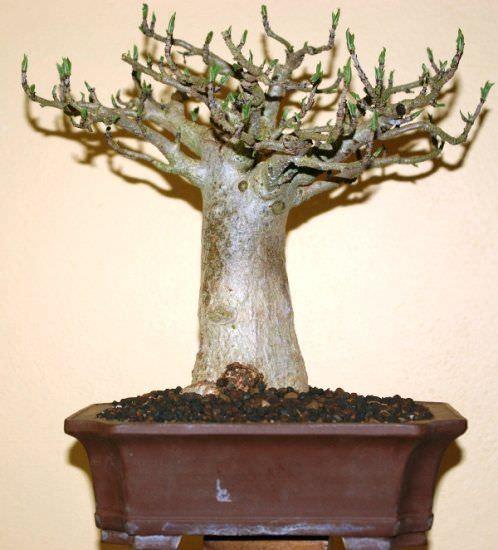
If you are growing baobab trees in pot, repotting is necessary. The growth of baobab roots is very strong. Therefore, the tree requires enough space to unfold. Repot baobab when plants seems root bound, roots starts to appear on upper surface.
Pruning
The baobab tree can be pruned throughout the year except winter. It’s easy, simply remove the shoots, which are located under the main crown. If possible, make a cut near bud. So a new bud of the branch will be ensured.
In order to cut individual branches summer is the ideal time
Diseases, pests and other problems
Some common pests that attracts on baobab tree are mealybugs, spider mites and fungus gnats.
Baobab Tree Facts and Adaptations
It has strong branches, impressive trunk and fleshy leaves.
Baobab tree forms large white flowers after a few years of growing, it also produces fruits that taste well and provide energy.
Fruits are rich in calcium and slightly acidic.
Baobab tree is drought tolerant and has the ability to store large amounts of water in its trunk and roots.
It is forgiving, robust and low-maintenance plant.
Baobab is a low maintenance tree and regarded as world’s largest succulent. It can also be grown in pot, baobab bonsai is famous and is particularly well suited for beginners and if you have a large backyard, you can grow it outside. The baobab tree flourishes on poor soils, tolerates heat and has the ability to store large amounts of water, to survive in drought.

USDA Zones: 10 – 12, can be grown in other zones in pots with care in winter
Difficulty: Moderate
Other Names: Adansonia (scientific name), boab, boaboa, tabaldi, bottle tree, upside-down tree, and monkey bread tree.
Height: up to 30 meters
Bloom Color: White
Propagation
Even gardeners without green fingers can make it with a little patience, to multiply the baobab tree. This is done in two ways:
Growing Baobab from Seed
Before sowing, the Baobab seeds needs soaking at room temperature. For this, soak the seeds for one day in warm water. After that, scarify the baobab seeds on sandpaper to expose their inner white layer.
Dry seeds indoors for a day before planting. The germination rate of baobab seeds is low, so sow 3 times more seeds than required.
Sow baobab seeds 1 to 2 inch deep and keep the soil temperature above at least 15 degrees Celsius. It is important to keep soil evenly moist, but not kept wet.
Once the roots are formed, baobab can be planted into individual pots or on the grounds. The pot you use should have a minimum diameter of seven centimeters.
The germination of baobab seeds is sporadic, their germination can take anywhere from a week to a month. The cultivation of baobab from seed requires some patience. Because in some cases, the germination can take several months.
Propagation from cuttings
Baobab tree can also be grown from cutting. For this, take cutting in spring from the tree. The cuttings should have at least three leaves.
After taking a cutting, let it dry for a few days to reduce the chances of fungal attacks and stem rot. After that, plant the cutting in soil mixture of sand and peat.
RequirementsLocation and Soil
Growing baobab tree requires at least 6 hours of direct sunlight, it appreciates as much sun as given. If baobab receives too little daylight, it grows slowly and spindly and leaves turns yellow.
In order to create the optimum soil conditions for the baobab, soil must have good drainage and should be sandy. To make baobab soil at home, mix 3 parts of compost, 2 parts of sand in 1 part soil.
However, best to buy premixed cactus soil. This allows better aeration of the soil and prevents the roots rot.
Watering and fertilizing
Watering requirement of baobab is moderate to low as it is native to arid areas of Africa and it should be done carefully. If you’re growing baobab in container, choose one with good drainage holes, so that the excess water can seep out from bottom.
Overwatering should be avoided. Before watering the plant again, always check if the soil is dry. If it is moist, do not water. As baobab is very tolerant to droughts, do not water if unsure.
Mature baobab tree on ground does not need any fertilizer. Fertilize young and potted plant with liquid succulent fertilizer that is high in potassium and low in nitrogen every month.
Baobab Care
Taking care of a baobab is simple. The sturdy exotic plant loves warm, sunny and bright location. Larger specimens survive longer drying sessions. Seedlings, on other hand need more water and should be kept moderately moist. Baobab tree if grown successfully, rewards you not only with its ornamental thick trunk and rich green leaves, but also with large white flowers and edible fruits.
Overwintering Baobab
Knowing how to grow a baobab tree is not as difficult as overwintering it especially if you’re living in extremely cold climate. You’ll need to do a lot of care to overwinter it.
Place it indoors, in a bright and warm position near a windowsill. Try to keep temperature around 10 C, lower than this will stunt baobab.
In winter, baobab tree drops its leaves and goes to dormancy. During this time water sparingly, watering in winter can cause root rot.
Also stop to fertilize. In the spring, place it back at its usual location. Resume watering when buds begin to swell.
Repotting

If you are growing baobab trees in pot, repotting is necessary. The growth of baobab roots is very strong. Therefore, the tree requires enough space to unfold. Repot baobab when plants seems root bound, roots starts to appear on upper surface.
Pruning
The baobab tree can be pruned throughout the year except winter. It’s easy, simply remove the shoots, which are located under the main crown. If possible, make a cut near bud. So a new bud of the branch will be ensured.
In order to cut individual branches summer is the ideal time
Diseases, pests and other problems
Some common pests that attracts on baobab tree are mealybugs, spider mites and fungus gnats.
Baobab Tree Facts and Adaptations
It has strong branches, impressive trunk and fleshy leaves.
Baobab tree forms large white flowers after a few years of growing, it also produces fruits that taste well and provide energy.
Fruits are rich in calcium and slightly acidic.
Baobab tree is drought tolerant and has the ability to store large amounts of water in its trunk and roots.
It is forgiving, robust and low-maintenance plant.
0
0
文章
Micky
2017年05月22日

Learn how to grow carob tree. Growing carob tree is easy, it’s also grown as ornamental plant in the gardens.
Growing Carob is durable evergreen tree native to the Mediterranean. It has bright, green beautiful foliage, cluster of small flowers and edible pods that are used as cocoa powder substitute.
Carob pods contain about 8% protein, vitamins A and B and about one-third of calories than chocolate.
USDA Zones — 9-11
Propagation Method — Seeds
Difficulty — Easy
Soil pH — 6 – 8
Carob Tree Growing Conditions
Carob tree grows about 10 meter tall (exceptionally 15 m). It is a dioecious tree, which means each tree bears male or female flowers. Carob tree can bear up to 20 F temperature.
Carob tree has a thick and twisted trunk with a rough and brown bark. Its leaves are oval, dark green and shiny that are 12 to 30 centimeters long. Its foliage provides a welcome shade in hot countries. They form a very effective curtain against noise too.
Growing Carob from Seeds
The fresh carob tree seeds germinates quickly and easily. If you don’t find fresh seeds you can grow it from dry seeds which is scarified and soaked in water until they double in size. They can be planted in spring or fall.
Requirements for Growing Carob TreeSoil
The carob tree is a tree that grows in many soil types including hillsides with deep sandy soil or loam, even arid. It does not tolerate acidic or wet soils but requires good drainage.
Sun
Carob tree needs full sun and a position sheltered from wind.
Watering
It is resistant to drought. However, watering must be provided during dry seasons, especially if the tree is grown for its fruit.
Carob Tree Care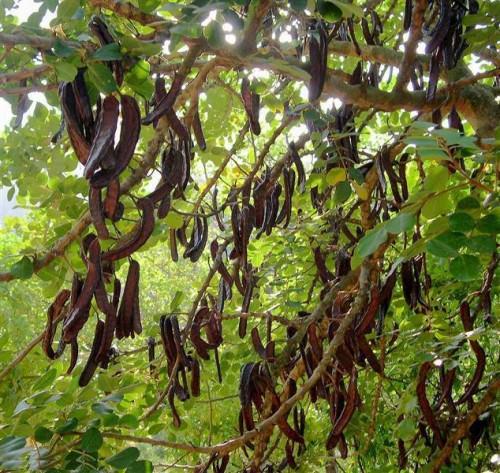
Once fully developed carob tree can withstand temperatures up to -7 ° C, but frost during flowering period can reduce or sometimes prevent fruiting. The tree is ideally grown in regions with a Mediterranean climate.
Fertilizer
Fertilizer is often unnecessary for carob trees. However, a 8-3-9 fertilizer can be applied occasionally to give plant a boost.
Pruning
Growing Carob is durable evergreen tree native to the Mediterranean. It has bright, green beautiful foliage, cluster of small flowers and edible pods that are used as cocoa powder substitute.
Carob pods contain about 8% protein, vitamins A and B and about one-third of calories than chocolate.

USDA Zones — 9-11
Propagation Method — Seeds
Difficulty — Easy
Soil pH — 6 – 8
Carob Tree Growing Conditions
Carob tree grows about 10 meter tall (exceptionally 15 m). It is a dioecious tree, which means each tree bears male or female flowers. Carob tree can bear up to 20 F temperature.
Carob tree has a thick and twisted trunk with a rough and brown bark. Its leaves are oval, dark green and shiny that are 12 to 30 centimeters long. Its foliage provides a welcome shade in hot countries. They form a very effective curtain against noise too.
Growing Carob from Seeds
The fresh carob tree seeds germinates quickly and easily. If you don’t find fresh seeds you can grow it from dry seeds which is scarified and soaked in water until they double in size. They can be planted in spring or fall.
Requirements for Growing Carob TreeSoil
The carob tree is a tree that grows in many soil types including hillsides with deep sandy soil or loam, even arid. It does not tolerate acidic or wet soils but requires good drainage.
Sun
Carob tree needs full sun and a position sheltered from wind.
Watering
It is resistant to drought. However, watering must be provided during dry seasons, especially if the tree is grown for its fruit.
Carob Tree Care

Once fully developed carob tree can withstand temperatures up to -7 ° C, but frost during flowering period can reduce or sometimes prevent fruiting. The tree is ideally grown in regions with a Mediterranean climate.
Fertilizer
Fertilizer is often unnecessary for carob trees. However, a 8-3-9 fertilizer can be applied occasionally to give plant a boost.
Pruning
0
0
文章
Micky
2017年05月22日

Want to grow a cashew tree in your garden? But for growing cashew nuts tree you’ll need to acquire some basic growing and planting information that is given below in this article.
Cashew nuts growing is easy, but it requires a more specific environment and growing conditions. If you can provide that environment then you can grow your cashew tree and enjoy the nuts and fresh fruits that are called cashew apple, throughout the year.

USDA Zones — 10 – 11
Difficulty — Moderate
Soil pH — Slightly acidic to neutral
Other names — Maranon, Noix d’anacarde, Caju, Kaju, Mundiri, Kazu, Pajuil, anacardio, Paringi mavu, 槚如树
Cashew Nuts Growing Information
Cashew or Anacardium occidentale originates from the Caribbean Island and the North East of Brazil. But today it is grown in several other tropical parts of the world. Mostly in Africa, India and Southeast Asia for cashew nuts.
It is also called as cashew apple tree; it is part of the Anacardiaceae family, the same family that belongs to pistachio and mango.
Cashew tree can grow up to 6 – 12 m (20 – 40 f) high. Its evergreen leaves are oval, leathery and dark green. They have a prominent midrib.
The flowers, white and pink are gathered in inflorescence at the tips of young shoots. They are smaller in size but very fragrant.
As for the fruits of this tree, do not be fooled by appearances. The cashew apple is oval-shaped, like bell pepper: yellow, orange or red in color is a false fruit (it is also edible). The real fruit, more discreet is a nut attached to the end of the fake fruit. It is that which contains the edible kernel, which we called cashew.
How to Grow Cashew Tree from Seed
Cashew tree can be grown from seeds, air layering, and grafting. To propagate it from seeds, you will need a matured unshelled nut (seed). These seeds are viable up to 4 months.
If you have collected the fresh seed from the tree, dry it in the sun for 3 days and soak in water overnight before sowing.
Sow the seeds in good quality seed starting mix; the seeds will germinate anywhere from 4 days to 3 weeks.
Requirements for Growing Cashew Nuts TreeSun
Cashew tree needs at least 6 hours of direct sun, it grows slowly and doesn’t fruit if grown in the shade.
Soil
Cashew prefers poor sandy and laterite soil with the pH level around 5 – 6.5. Never grow cashew tree in a clay-rich soil. It is heavy and encourages waterlogging, and in the case of growing cashew tree, the soil you use should be well drained in a way that water will flow smoothly.
Water
Cashew trees are moderately drought tolerant once established, but they produce more fruits if watered regularly. During the summer, water weekly or twice and deeply. Reduce or withhold watering during winter. Overwatering can harm or even kill your cashew tree, so water only if soil is dry and let the soil to dry out between spells of watering.
Fertilizer
Cashew tree needs regular application of fertilizer to grow vigorously and produce fruits. Use slow release fertilizer with N-P-K 8 – 3 – 9 according to the product instructions given on the packet, around the base of the tree every two months during growing season. Also apply compost or farm manure once in a year, around 30 pounds (15 kg) on the surface of the soil to a mature tree.
Cashew Nuts Growing CarePruning
Prune cashew trees regularly to remove weak, dead and entangled branches and branches that are infested with diseases or pests. Also, cut overcrowded branches to promote vigorous growth.
Mulching
Do mulching around your cashew tree with organic matters to prevent weeds and to conserve moisture.
Pests and Diseases
The cashew tree is generally pest free if it is in good health. Major pests that attack it are tea mosquito, stem and root borer, leaf Miner and blossom Webber.
Harvesting and Cashew Nut Processing
Harvest when cashew apples turn pink or red and cashew nut shell are gray. After harvesting, separate the cashew apple from the nut.
Cashew apple can be eaten raw or make juice of it. Unshelled cashew nut can be stored up to 2 years.
Do not attempt to break the shell before roasting; cashew shell contains very caustic oil which can burn skin.
When processing cashew nut at home must wear gloves and safety glasses and take special care. To learn more on how to process cashew– read this.
Also Read: How to Grow Mango Tree
Cashew Nuts Growing TipsSow fresh cashew seeds for germination, as they germinate easily.A tree grown from seeds take 3 to 5 years to produce its first fruits. Our recommendation is to buy a potted plant from a nursery, this way you’ll not have to wait that long.Choose a location that is well protected from the wind.Cashew grows better when the temperature remains around 80 degrees Fahrenheit (25 C) although it can withstand temperatures as low as 50 degrees Fahrenheit (10 C) and as high as 105 Fahrenheit (40.5 C) without any problem.Keep the area around the base of your cashew tree free from weeds, small shrubs, vines, and debris.Watch for sick or dead branches, prune them if necessary.Benefits of Cashew Nuts
One of the most delicious and healthiest nuts cashews are an amazing source of nutrients, and not only the cashew nuts but its fruit cashew apple is nutritious too. It is a rich source of vitamin C, five times more than an orange. It also contains higher amounts of calcium, iron and vitamin B1, which is more than most of the fruits. To know more about the benefits of cashew nuts read this article.
Also Read: How to Grow Mamoncillo
Cashew nuts growing is easy, but it requires a more specific environment and growing conditions. If you can provide that environment then you can grow your cashew tree and enjoy the nuts and fresh fruits that are called cashew apple, throughout the year.

USDA Zones — 10 – 11
Difficulty — Moderate
Soil pH — Slightly acidic to neutral
Other names — Maranon, Noix d’anacarde, Caju, Kaju, Mundiri, Kazu, Pajuil, anacardio, Paringi mavu, 槚如树
Cashew Nuts Growing Information
Cashew or Anacardium occidentale originates from the Caribbean Island and the North East of Brazil. But today it is grown in several other tropical parts of the world. Mostly in Africa, India and Southeast Asia for cashew nuts.
It is also called as cashew apple tree; it is part of the Anacardiaceae family, the same family that belongs to pistachio and mango.
Cashew tree can grow up to 6 – 12 m (20 – 40 f) high. Its evergreen leaves are oval, leathery and dark green. They have a prominent midrib.
The flowers, white and pink are gathered in inflorescence at the tips of young shoots. They are smaller in size but very fragrant.
As for the fruits of this tree, do not be fooled by appearances. The cashew apple is oval-shaped, like bell pepper: yellow, orange or red in color is a false fruit (it is also edible). The real fruit, more discreet is a nut attached to the end of the fake fruit. It is that which contains the edible kernel, which we called cashew.
How to Grow Cashew Tree from Seed
Cashew tree can be grown from seeds, air layering, and grafting. To propagate it from seeds, you will need a matured unshelled nut (seed). These seeds are viable up to 4 months.
If you have collected the fresh seed from the tree, dry it in the sun for 3 days and soak in water overnight before sowing.
Sow the seeds in good quality seed starting mix; the seeds will germinate anywhere from 4 days to 3 weeks.
Requirements for Growing Cashew Nuts TreeSun
Cashew tree needs at least 6 hours of direct sun, it grows slowly and doesn’t fruit if grown in the shade.
Soil
Cashew prefers poor sandy and laterite soil with the pH level around 5 – 6.5. Never grow cashew tree in a clay-rich soil. It is heavy and encourages waterlogging, and in the case of growing cashew tree, the soil you use should be well drained in a way that water will flow smoothly.
Water

Cashew trees are moderately drought tolerant once established, but they produce more fruits if watered regularly. During the summer, water weekly or twice and deeply. Reduce or withhold watering during winter. Overwatering can harm or even kill your cashew tree, so water only if soil is dry and let the soil to dry out between spells of watering.
Fertilizer
Cashew tree needs regular application of fertilizer to grow vigorously and produce fruits. Use slow release fertilizer with N-P-K 8 – 3 – 9 according to the product instructions given on the packet, around the base of the tree every two months during growing season. Also apply compost or farm manure once in a year, around 30 pounds (15 kg) on the surface of the soil to a mature tree.
Cashew Nuts Growing CarePruning
Prune cashew trees regularly to remove weak, dead and entangled branches and branches that are infested with diseases or pests. Also, cut overcrowded branches to promote vigorous growth.
Mulching
Do mulching around your cashew tree with organic matters to prevent weeds and to conserve moisture.
Pests and Diseases
The cashew tree is generally pest free if it is in good health. Major pests that attack it are tea mosquito, stem and root borer, leaf Miner and blossom Webber.
Harvesting and Cashew Nut Processing
Harvest when cashew apples turn pink or red and cashew nut shell are gray. After harvesting, separate the cashew apple from the nut.
Cashew apple can be eaten raw or make juice of it. Unshelled cashew nut can be stored up to 2 years.
Do not attempt to break the shell before roasting; cashew shell contains very caustic oil which can burn skin.
When processing cashew nut at home must wear gloves and safety glasses and take special care. To learn more on how to process cashew– read this.
Also Read: How to Grow Mango Tree
Cashew Nuts Growing TipsSow fresh cashew seeds for germination, as they germinate easily.A tree grown from seeds take 3 to 5 years to produce its first fruits. Our recommendation is to buy a potted plant from a nursery, this way you’ll not have to wait that long.Choose a location that is well protected from the wind.Cashew grows better when the temperature remains around 80 degrees Fahrenheit (25 C) although it can withstand temperatures as low as 50 degrees Fahrenheit (10 C) and as high as 105 Fahrenheit (40.5 C) without any problem.Keep the area around the base of your cashew tree free from weeds, small shrubs, vines, and debris.Watch for sick or dead branches, prune them if necessary.Benefits of Cashew Nuts
One of the most delicious and healthiest nuts cashews are an amazing source of nutrients, and not only the cashew nuts but its fruit cashew apple is nutritious too. It is a rich source of vitamin C, five times more than an orange. It also contains higher amounts of calcium, iron and vitamin B1, which is more than most of the fruits. To know more about the benefits of cashew nuts read this article.
Also Read: How to Grow Mamoncillo
1
0
文章
Andy
2017年05月22日

Learn how to grow tulsi plant, its care and growing requirements are simple and easy.
Tulsi or holy basil is an incredible herb revered in Indian mythology in Hinduism for its medicinal and spiritual characteristics.
Tulsi, a medicinal herb is native to India, its spicy and refreshing fragrance and tiny colorful flowers makes this a useful houseplant. Tulsi grows as a perennial plant in areas with mild winter and as an annual in cold and temperate climates.
USDA Zones — 10-11, can be grown in the cooler zones as annual
Tulsi or holy basil is an incredible herb revered in Indian mythology in Hinduism for its medicinal and spiritual characteristics.

Tulsi, a medicinal herb is native to India, its spicy and refreshing fragrance and tiny colorful flowers makes this a useful houseplant. Tulsi grows as a perennial plant in areas with mild winter and as an annual in cold and temperate climates.
USDA Zones — 10-11, can be grown in the cooler zones as annual
0
0
求助
Lucky Coyote
2017年05月20日

I'd love to know what type of succulents these are :) there are so many of them in my neighborhood growing out of the sidewalk and into the street

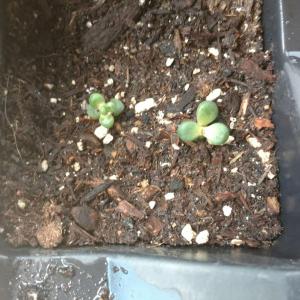


1
1
Ueca:*Bump* The vegetable-looking one is Sedum spurium.
Lucky Coyote:@Ueca Oooh I'd love to when they develop better roots 😺
Ueca:Pick some and mail them over to me here in Canada! ;D
Lucky Coyote:I meant to add these as well



